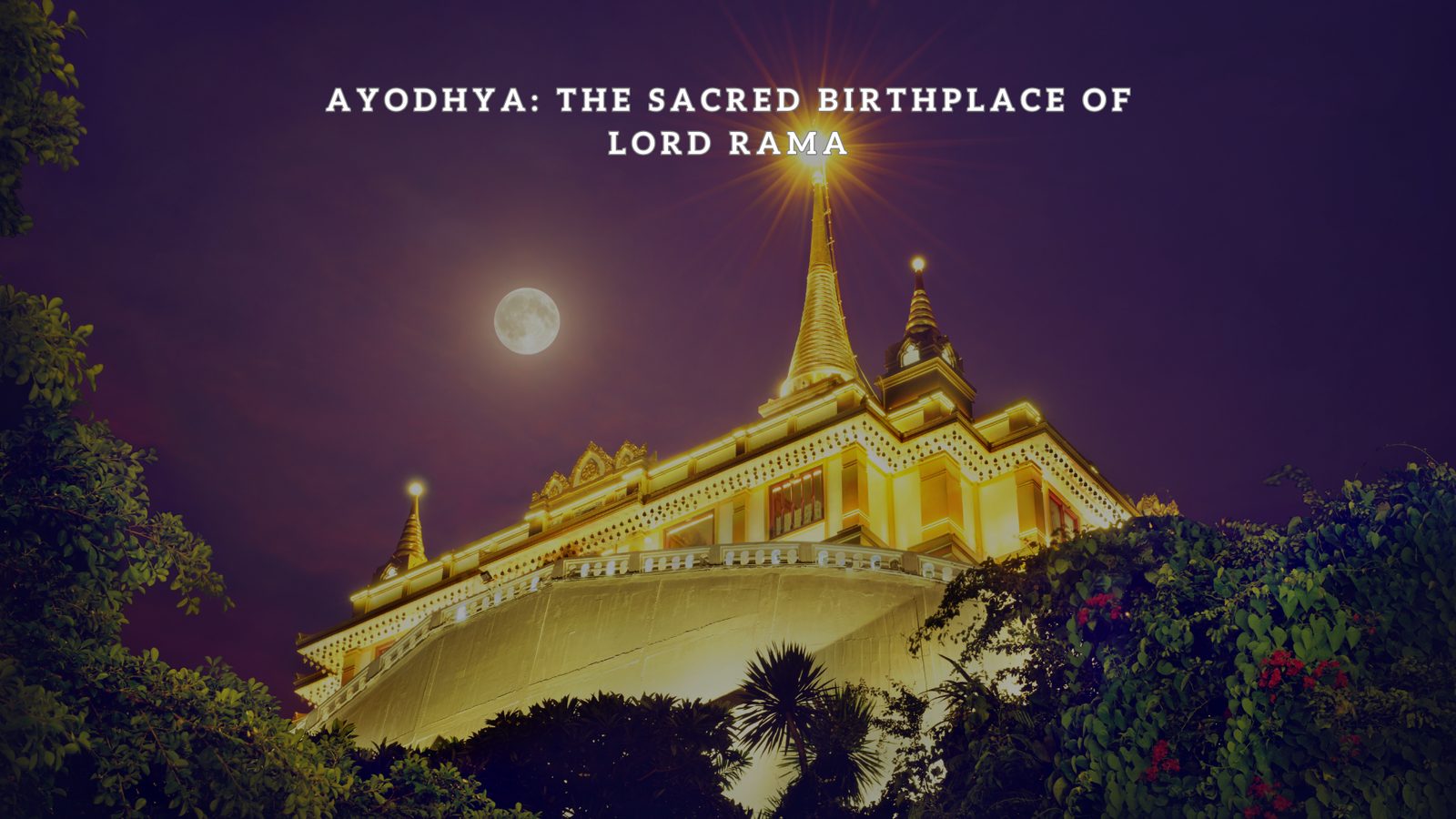Introduction: Ayodhya, nestled in the northern Indian state of Uttar Pradesh, holds a special place in the hearts of millions of Hindus around the world. Renowned as the birthplace of Lord Ram, Ayodhya is a city steeped in rich mythology, ancient history, and religious significance. This blog aims to provide a detailed exploration of Ayodhya, shedding light on its historical and cultural importance as the birthplace of Lord Ram.
Mythological Significance: According to Hindu mythology, Ayodhya is believed to be the capital of the ancient kingdom of Kosala, ruled by King Dasharatha, the father of Lord Ram. The epic Hindu scripture, the Ramayana, narrates the story of Lord Ram's birth and his subsequent journey. It describes Ayodhya as a prosperous and magnificent city, blessed with divine virtues.
Ram Janmabhoomi: The Ram Janmabhoomi, meaning "birthplace of Lord Ram," is the most revered site in Ayodhya. It is believed to be the exact spot where Lord Ram was born. The site gained significant prominence and became a focal point of religious and political debates, culminating in a landmark court case regarding the ownership of the land. Eventually, in 2020, the Supreme Court of India ruled in favor of building a grand temple dedicated to Lord Ram at the Ram Janmabhoomi site.
Ayodhya: A City of Temples: Ayodhya is adorned with numerous temples dedicated to Lord Ram and other deities. The Hanuman Garhi Temple, situated atop a hill, is a major attraction and holds great importance in the Ramayana. Kanak Bhavan, a beautiful temple known for its intricate architecture, is believed to be the palace where Lord Ram and his wife, Sita, resided after their marriage. Other notable temples include the Nageshwarnath Temple, Swarg Dwar Temple, and the Treta Ke Thakur Temple.
Festivals and Celebrations: Ayodhya comes alive during festivals, especially during Diwali, the festival of lights. The city illuminates with thousands of diyas (oil lamps), celebrating Lord Ram's return to Ayodhya after 14 years of exile. The grandeur of the Ram Leela, a dramatic reenactment of Lord Ram's life, is unparalleled and draws visitors from far and wide.
Cultural Heritage: Ayodhya is not just a religious destination but also a cultural treasure trove. The city's vibrant culture is deeply rooted in its association with Lord Ram. Its music, dance, art, and cuisine reflect the essence of Ramayana. The residents of Ayodhya are known for their warm hospitality and their deep reverence for Lord Ram, which permeates every aspect of their lives.
Tourism and Pilgrimage: Ayodhya attracts millions of devotees and tourists every year who seek spiritual solace and wish to immerse themselves in the aura of Lord Ram. The city offers a range of accommodation options, from budget hotels to luxurious resorts, ensuring a comfortable stay for visitors. The Ayodhya Art Gallery, Ayodhya Shodh Sansthan, and the Ayodhya Research Institute are some of the places where one can delve into the historical and cultural aspects of Ayodhya.
Conclusion: Ayodhya stands as a testament to the faith and devotion of millions of Hindus worldwide. It is a city that has witnessed the birth of Lord Ram and has become a symbol of reverence and spirituality. The significance of Ayodhya extends beyond religion, captivating visitors with its mythical tales, architectural wonders, and cultural heritage.


